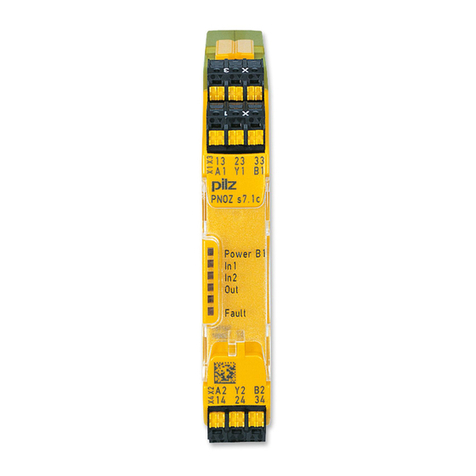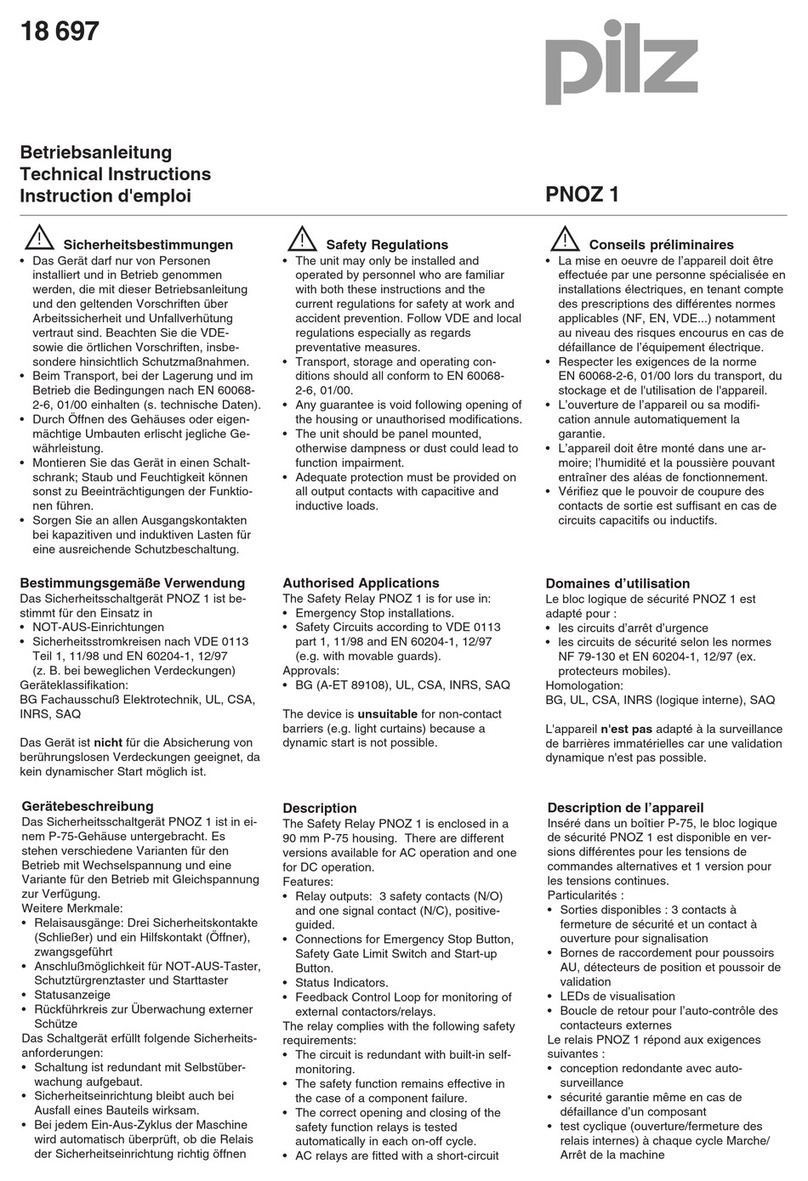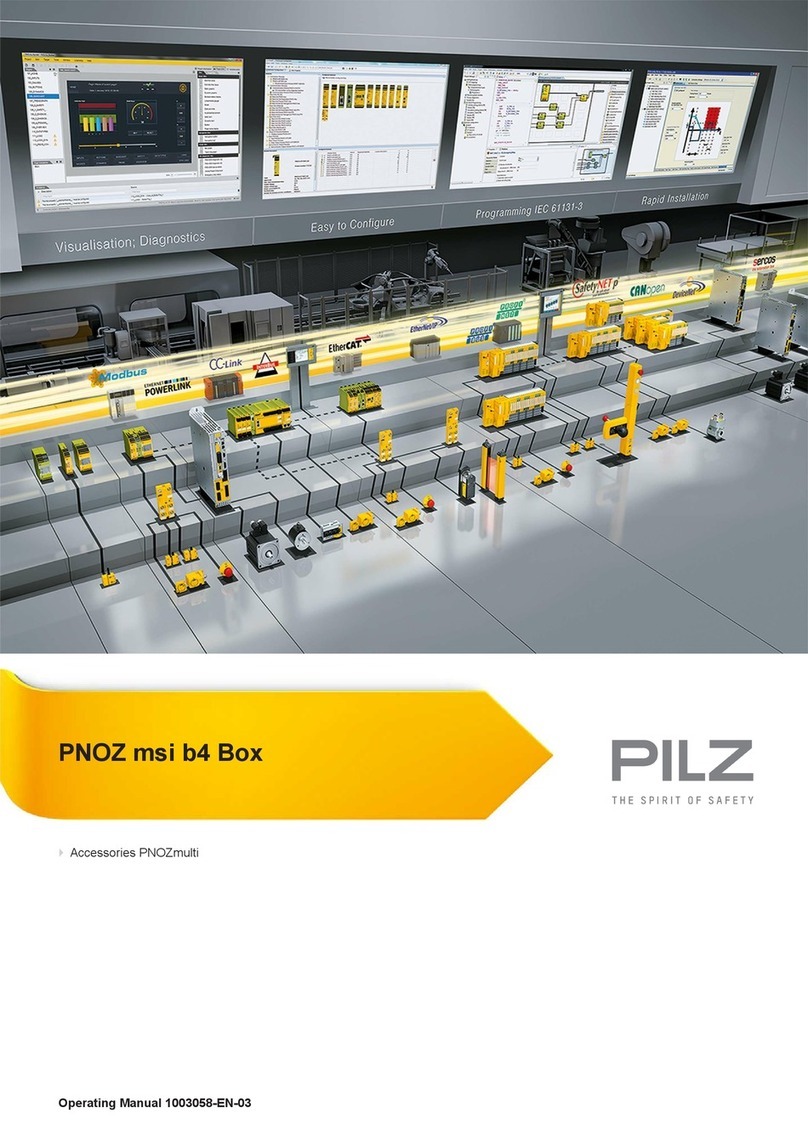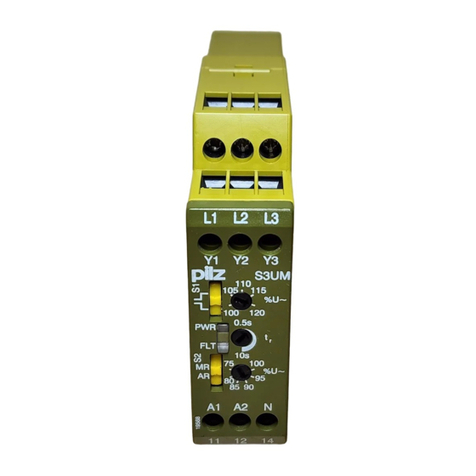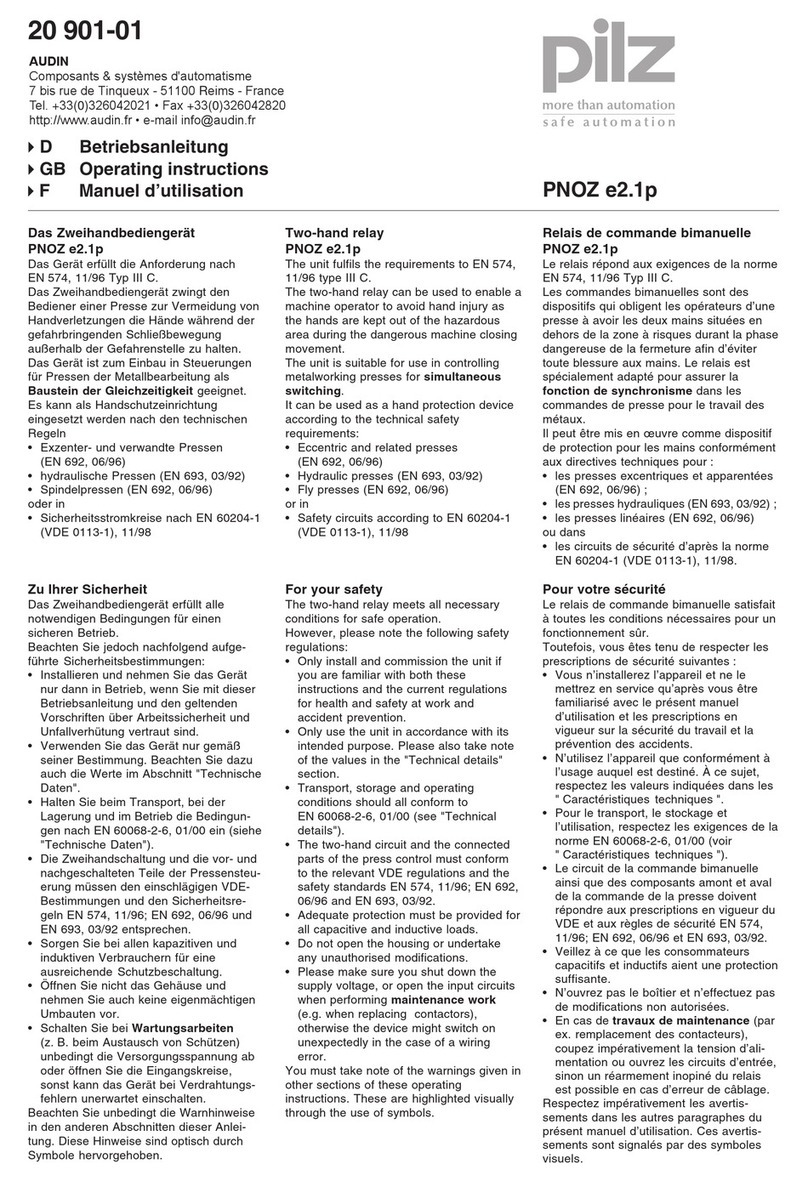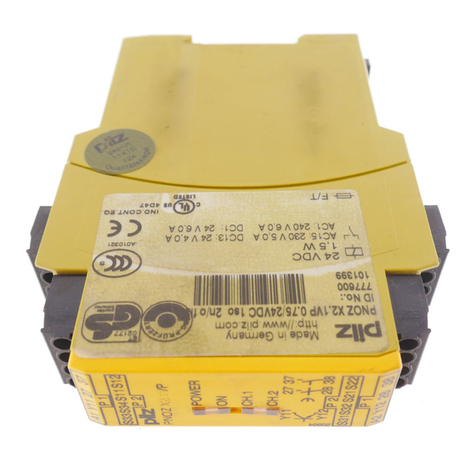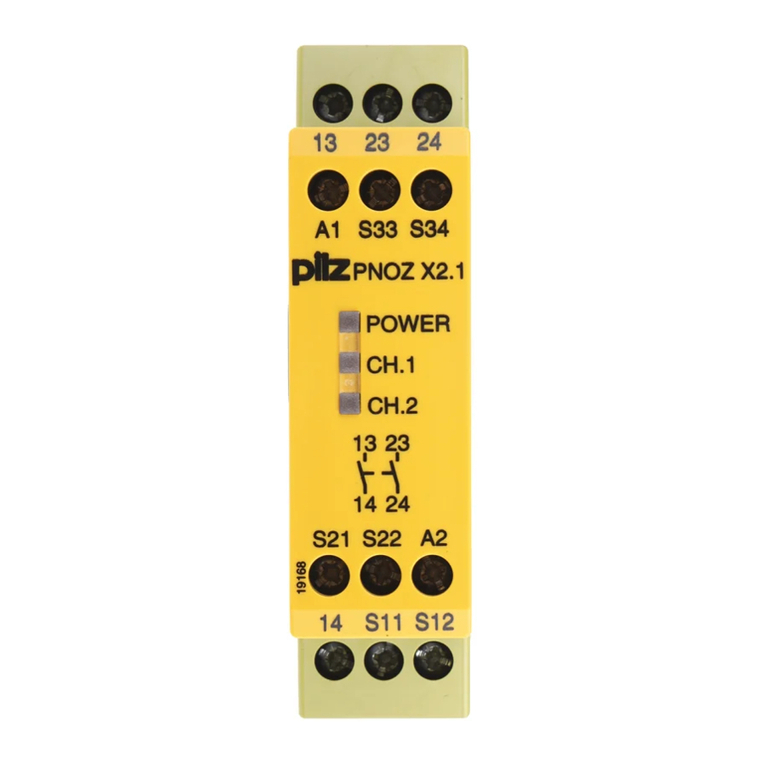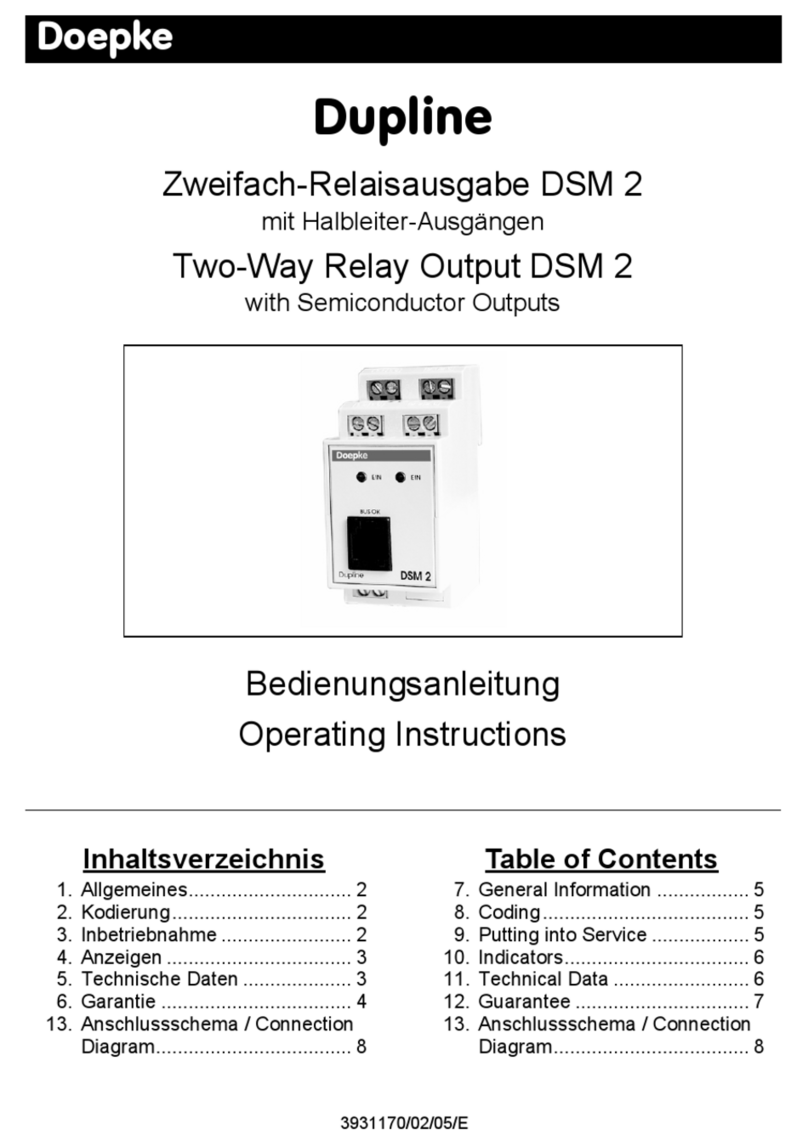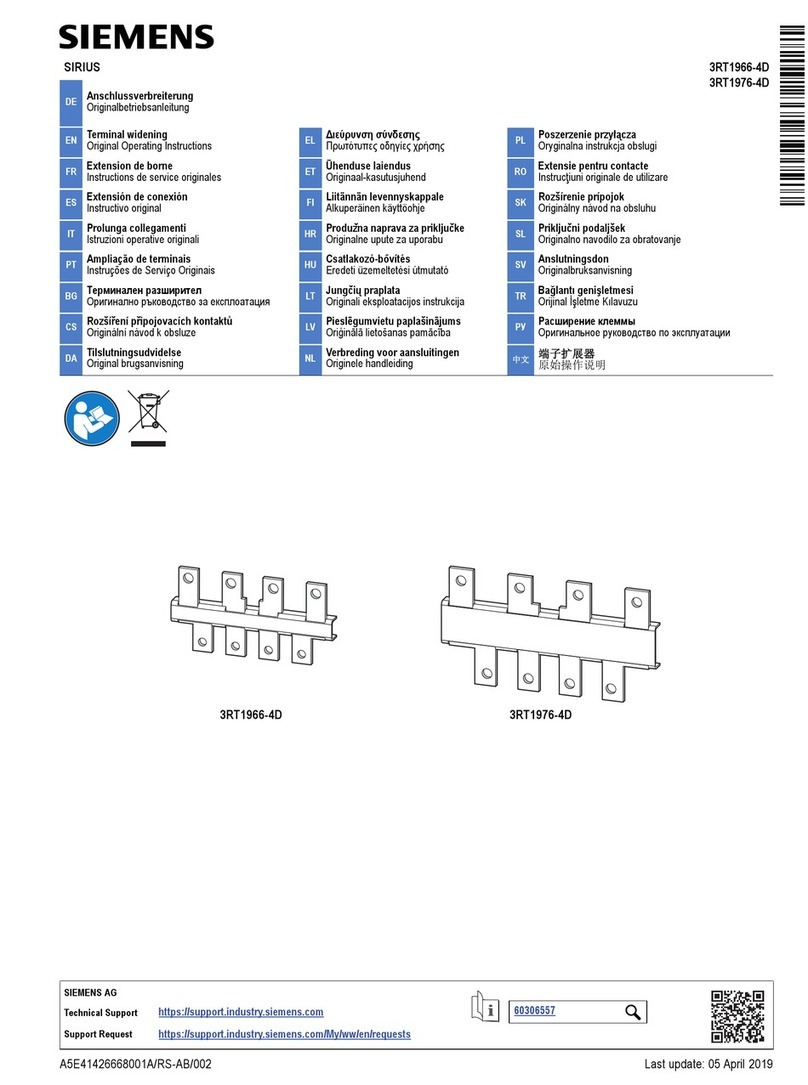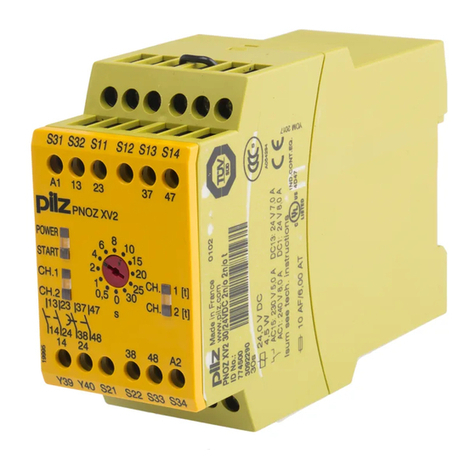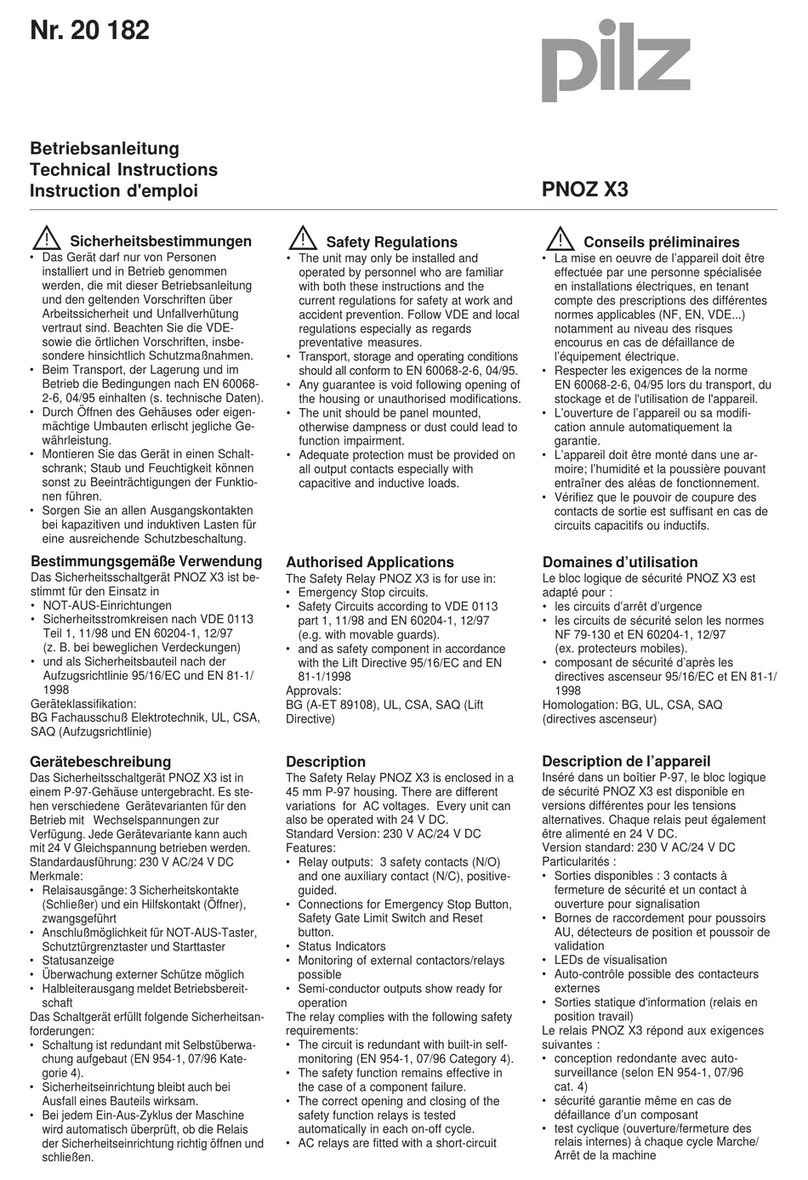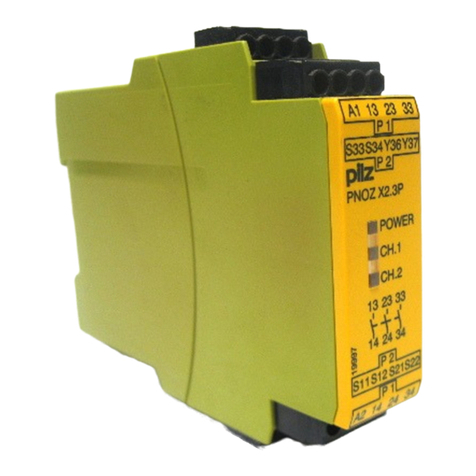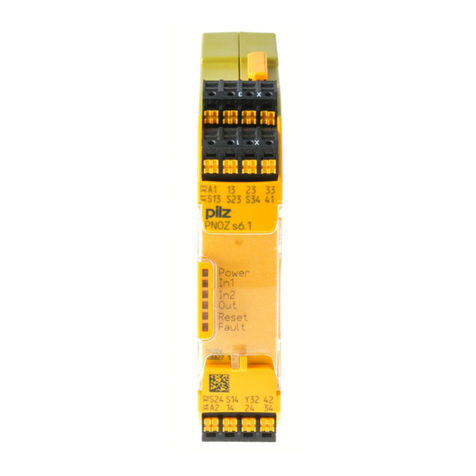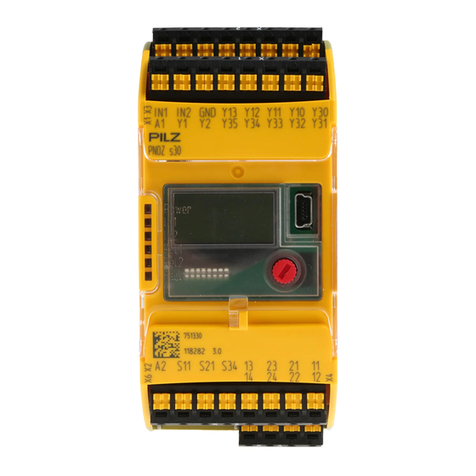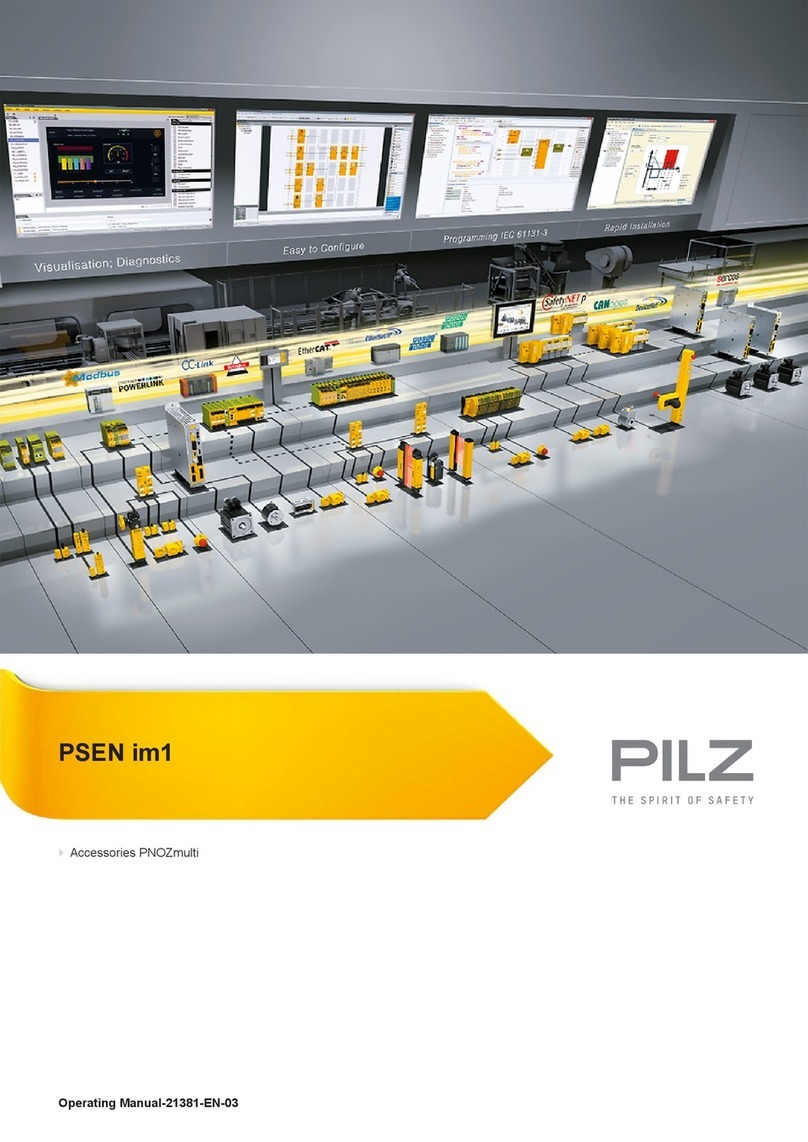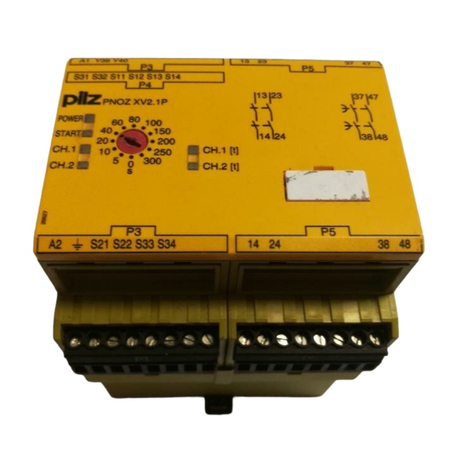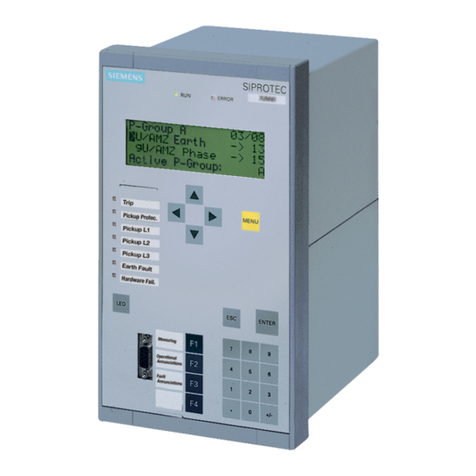
- 3 -
• Kontaktvervielfachung und -verstärkung
durch Anschluss von externen Schützen
Montage
Das Sicherheitsschaltgerät muss in einen
Schaltschrank mit einer Schutzart von mind.
IP54 eingebaut werden. Zur Befestigung auf
einer Normschiene dient ein Rastelement
auf der Rückseite des Geräts.
Inbetriebnahme
Beachten Sie bei der Inbetriebnahme:
• Auslieferungszustand bei Geräten mit
Schraubklemmen: Brücke zwischen S11-
S12 (Eingangskreis zweikanalig) und
S15-S16 (Schutztürsteuerung).
• Nur die Ausgangskontakte 13-14/23-24/
33-34 sind Sicherheitskontakte. Aus-
gangskontakt 41-42 ist ein Hilfskontakt
(z. B. für Anzeige).
•Vor die Ausgangskontakte eine
Sicherung (10 A flink oder 6 A träge)
schalten, um das Verschweißen der
Kontakte zu verhindern.
• Berechnung der max. Leitungslänge Imax im
Eingangskreis:
R
lmax
R
l
/ km
I
max
=
Rlmax = max. Gesamtleitungswiderstand
(s. technische Daten)
Rl/km = Leitungswiderstand/km
Da die Funktion Querschlusserkennung
nicht einfehlersicher ist, wird sie von Pilz
während der Endkontrolle geprüft. Eine
Überprüfung nach der Installation des
Geräts ist wie folgt möglich:
1. Gerät betriebsbereit (Ausgangs-
kontakte geschlossen)
2. Die Testklemmen S22-S32 zur
Querschlussprüfung kurzschließen.
3. Die Sicherung im Gerät muss auslösen
und die Ausgangskontakte öffnen.
Leitungslängen in der Größenordnung
der Maximallänge können das Auslö-
sen der Sicherung um bis zu 2 Minuten
verzögern.
4. Sicherung wieder zurücksetzen: den
Kurzschluss entfernen und die Be-
triebsspannung für ca. 1 Minute
abschalten.
• Leitungsmaterial aus Kupferdraht mit
einer Temperaturbeständigkeit von
60/75 °C verwenden.
• Angaben im Kapitel „Technische Daten“
unbedingt einhalten.
Ablauf:
• Versorgungsspannung:
Versorgungsspannung an Klemmen A1
und A2 anlegen.
• Startkreis:
- Automatischer Start : S13-S14 brücken
(S33-S34 offen).
- Automatischer Start bei Schutztür-
steuerung: S15-S16 brücken,
Schließerkontakt der Schutztür
zwischen S13-S14 anschließen.
- Manueller Start: Taster an S33-S34
anschließen (S15-S16 offen)
- Manueller Start mit Überwachung:
Taster an S33-S34 anschließen (S13-
S14 offen).
• Eingangskreis:
- Einkanalig: S21-S22 und S31-S32
brücken. Öffnerkontakt von Auslöse-
element an S11 und S12 anschließen.
• Augmentation du nombre de contacts ou
du pouvoir de coupure par l’utilisation de
contacteurs externes.
Montage
Le relais doit être monté en armoire ayant
un indice de protection mini IP54. Sa face
arrière permet un montage sur rail DIN.
Mise en oeuvre
Remarques préliminaires :
• Pontages présents à la livraison au
appareil avec bornes à vis : S11-S12
(commande par 2 canaux) et S15-S15
(Surveillance du protecteur mobile)
• Seuls les contacts 13-14, 23-24, 33-34
sont des contacts de sécurité. Le contact
41-42 est un contact d’information (ex.
voyant)
•Protection de contacts de sortie par
des fusibles 10 A rapides ou 6 A
normaux pour éviter leur soudage
• Calcular les longueurs de câblage max
Imax dans le circuit d’entrée:
R
lmax
R
l
/ km
I
max
=
Rlmax = résistivité de câblage totale max.
(voir les caractéristiques techniques)
Rl/km = résistivité de câblage/km
La fonction de détection de court-circuit
est testé par Pilz lors du contrôle final. Un
test sur site est possible de la façon
suivante :
1. Appareil en fonction (contacts de sortie
fermés)
2. Court-circuiter les bornes de
raccordement nécessaires au test S22-
S32.
3. Le fusible interne du relais doit
déclencher et les contacts de sortie
doivent s‘ouvrir. Le temps de réponse
du fuisible peut aller jusqu‘à 2 min. si
les longueurs de câblage sont proches
des valeurs maximales.
4. Réarmement du fusible : enlever le
court-circuit et couper l‘alimentation du
relais pendant au moins 1 min.
• Utiliser uniquement des fils de cablâge en
cuivre 60/75 °C.
• Respecter les données indiquées dans le
chap. „Caractéristiques techniques“.
Mise en oeuvre :
• Tension d’alimentation :
amener la tension d’alimentation sur A1
et A2.
• Circuit de réarmement:
- réarmement automatique: pontage des
bornes S13-S14 (S33-S34 ouvert)
- réarmement automatique pour
surveillance de protecteurs mobiles :
pontage des bornes S15-S16,
protecteur mobile (contact de trevail)
sur S13-S14
- réarmement manuel : câblage d'un
poussoir sur S33-S34 (S15-S16
ouvert).
- réarmement manuel auto-côntrolé:
câblage d'un poussoir sur S33-S34
(S13-S14 ouvert).
• Circuits d’entrée:
- Commande par 1 canal : câblage du
contact à ouverture entre S11-S12,
pontage entre S21-S22 et S31-S32
• Increase in the number of available
contacts by connection of external
contactors/relays.
Installation
The safety relay must be panel mounted
(min. IP54). There is a notch on the rear of
the unit for DIN-Rail attachment.
Operation
Please note for operation:
• Unit equipped with screw terminals is
delivered with a bridge between S11-S12
(2-channel input circuit) and S15-S16
(Safety-gate control)
• Only the output contacts 13-14/23-24/33-
34 are safety contacts. Output contact
41-42 is an auxiliary contact (e.g. for a
display).
•To prevent a welding together of the
contacts, a fuse (10 A quick/6 A slow
acting) must be connected before the
output contacts.
• Calculate the max. Cable runs Imax in the
input circuit:
R
lmax
R
l
/ km
I
max
=
Rlmax = Max. Total cable resistance
(see technical details)
Rl/km = Cable resistance/km
As the function for detecting shorts across
the inputs is not failsafe, it is tested by
Pilz during the final control check.
However, a test is possible after installing
the unit and it can be carried out as
follows:
1. Unit ready for operation (output
contacts closed)
2. Short circuit the test (connection)
terminals S22-S32 for detecting shorts
across the inputs.
3. The unit‘s fuse must be triggered and
the output contacts must open. Cable
lengths in the scale of the maximum
length can delay the fuse triggering for
up to 2 minutes.
4. Reset the fuse: remove the short circuit
and switch off the operating voltage for
approx. 1 minute.
• Use copper wiring that will withstand
60/75 °C.
• Important details in the section "Technical
Data“ should be noted and adhered to.
To operate:
• Supply operating voltage:
Connect the operating voltage to
terminals A1 and A2.
• Reset circuit:
- Automatic reset: Bridge S13-S14 (S33-
S34 open).
- Automatic reset for safety-gate control:
Bridge S15-S16, connect safety gate
(N/O contact) to S13-S14
- Manual reset: Connect button to S33-
S34 (S15-S16 open).
- Manual reset with monitoring: Connect
button to S33-S34 (S13-S14 open).
• Input circuit:
- Single-channel: Bridge S21-S22 and
S31-S32. Connect N/C contact from
safety switch (e.g. Emergency-Stop) to
S12 and S11.

